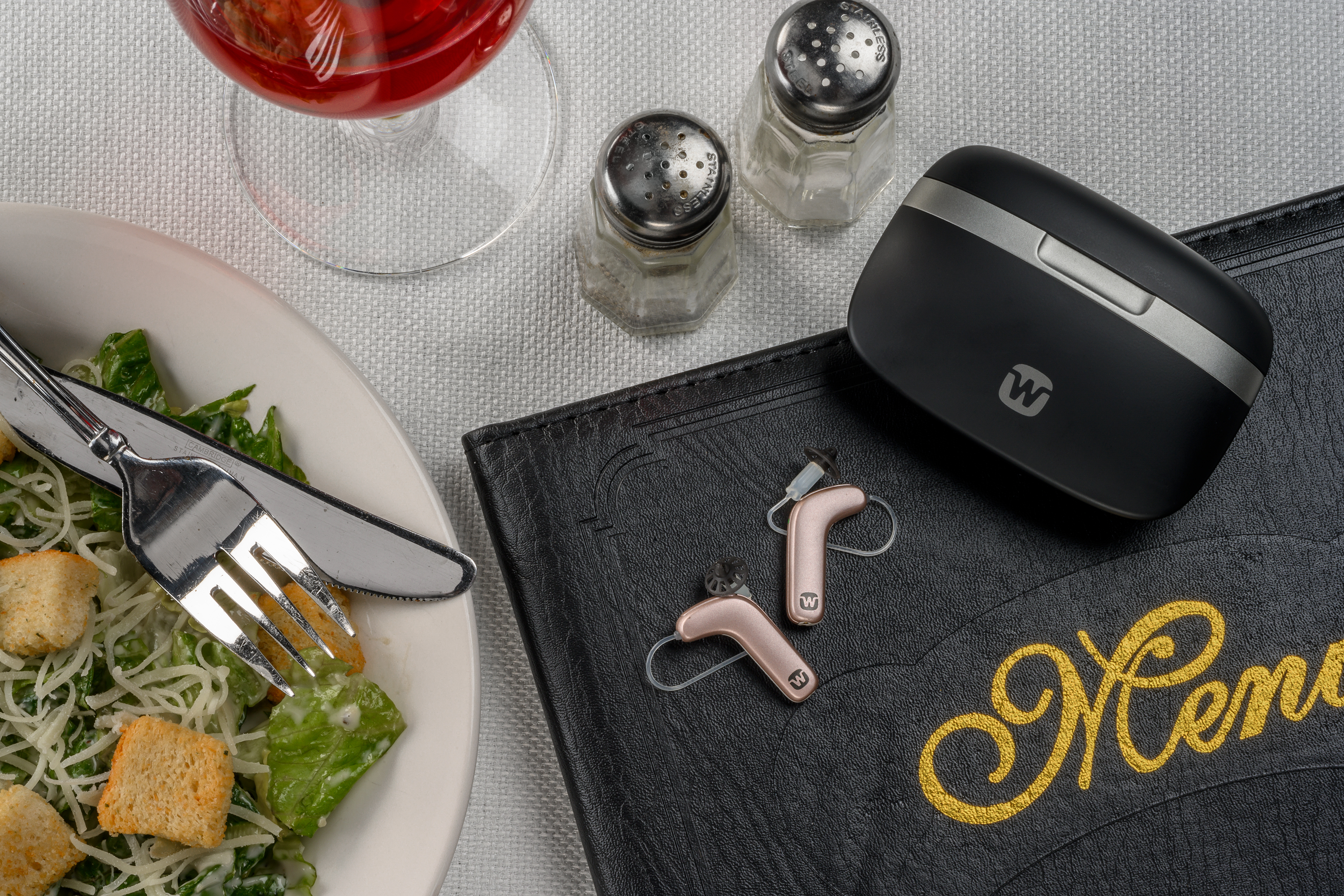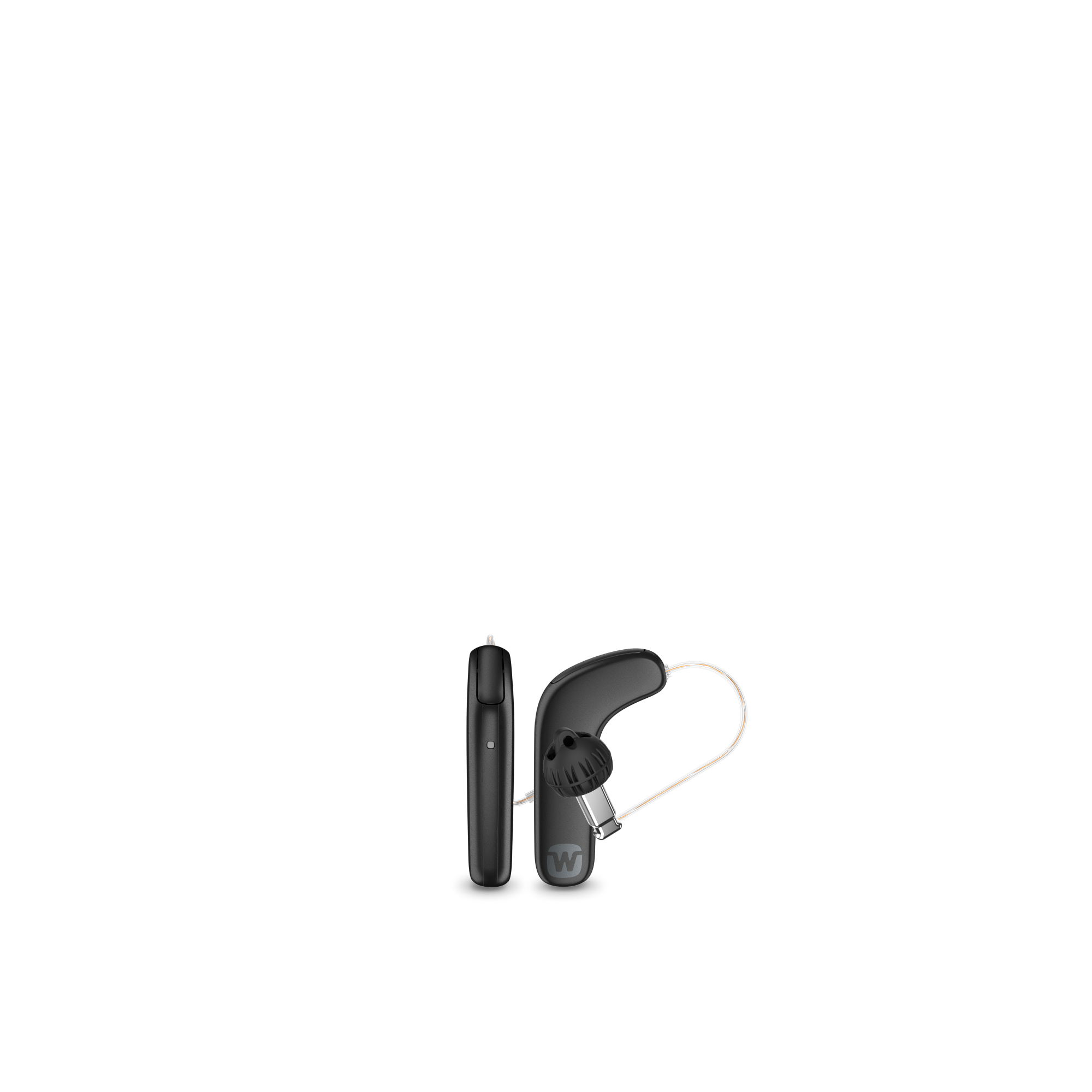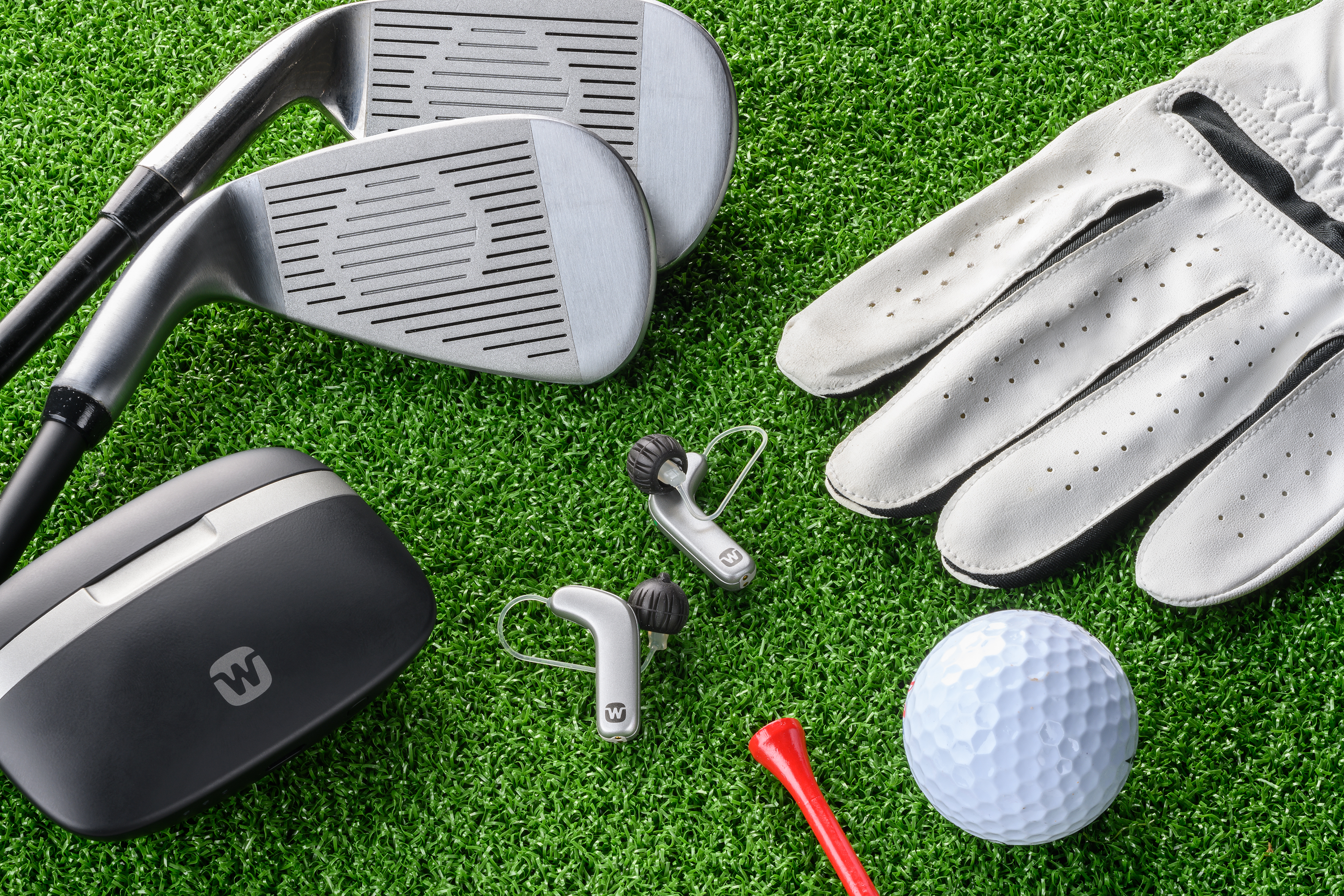What's So Smart About Widex SmartRIC?
AudiologyOnline: Why are noisy environments so challenging for people with hearing loss?

Lindsay Livengood AuD: Hearing in background noise is a challenge for everyone, even people without hearing loss. This is because in noisy environments, the desired sound, typically conversation, is masked by background noise. This reduced signal-to-noise ratio makes it difficult for individuals to discern speech or other important sounds. However, for people with hearing loss, it’s even more difficult because they typically have a reduced ability to understand speech, regardless of setting. When you combine a poor signal-to-noise ratio situation and reduced speech understanding, the challenge increases significantly.
AudiologyOnline: Is it difficult for new hearing aid wearers to adjust to these types of environments right away?
Lindsay Livengood AuD: It can be difficult for new wearers to adjust to all types of sounds that they have not been hearing “normally” for a while. Providing sound that maintains awareness and naturalness of surroundings while at the same time enhances the more desirable portion of the signal, such as speech, can be particularly beneficial so that new wearers can hear sounds the way they remember them and ideally increase their ability to communicate in all types of situations.
AudiologyOnline: In what ways do current hearing aids tackle the difficulties associated with noisy surroundings?

Lindsay Livengood AuD: Most modern hearing aids utilize a combination of directional microphones to clean up the signal prior to processing and noise reduction algorithms to further reduce the noise while it is being processed by the hearing aid. As an industry, the focus has largely been on the digital signal processing (DSP) of the hearing aid as a means of addressing speech in noise difficulties.
AudiologyOnline: The Widex SmartRIC™ does something totally new. Instead of relying on a software feature, it actually changes the device’s shape to improve wearer experiences in noisy environments. How so?
Lindsay Livengood AuD: With SmartRIC, we have reimagined the “traditional” hearing aid design. The groundbreaking L-shape of Widex SmartRIC reduces the angle of the microphones in order to enhance the wearer’s focus and improve performance in background noise. It’s really interesting, because with this hardware change, we are able to deliver more measurable benefit than is often accomplished in a typical platform upgrade where a new software feature is introduced – which is commonly what we see in the industry.
AudiologyOnline: You mentioned reducing the angle of the microphones. Can you explain what you mean by that?

Lindsay Livengood AuD: The angle between a hearing aid’s front and back microphones should ideally be as close to horizontal as possible. That is because, as the angle between the two mics increases (i.e. more vertical alignment), the microphones essentially move closer together relative to the horizontal plane, which has a negative impact on directivity. By utilizing the L-shaped design, we can place the mics at a more horizontal angle, increasing the relative distance between the mics and improving the directivity. The result is a device that more consistently aligns with the wearer’s primary focus, naturally following the direction of their attention and, ultimately, improving their performance in noise*. A traditionally shaped RIC hearing aid does not really address directionality from a “design” perspective. SmartRIC does. Hence why we say it is smarter by design.
* Kuk F, Slugocki C, Korhonen P, Peeters H. (2024). Forms influence functions: Importance of microphone angle and speech-in-noise performance. Hearing Review, 14-18.
AudiologyOnline: Are there any other typical issues that SmartRIC is designed to address?
Lindsay Livengood AuD: In addition to the L-shaped angle, Widex has made several other design enhancements to craft an elegant and seamless device that lets wearers enjoy the freedom of not having to think about their hearing aids when they are on the go. For example, the newly designed microphone inlets and aerodynamic microphone cover help tone down annoying wind and touch noise, effectively reducing what is often a significant nuisance for hearing aid wearers.
AudiologyOnline: Battery performance is also a focus for SmartRIC. Tell us about what SmartRIC does to improve battery life and the charging experience.
Lindsay Livengood AuD: SmartRIC allows wearers more freedom to live an active life through improved battery performance and Widex’s first ever portable charging case. SmartRIC is the company’s longest-lasting rechargeable RIC hearing aid, providing up to 37 hours on a single charge for longer wear and more streaming time.
The convenient portable charger can fully charge the hearing aids on the go in just four hours. A fast charge of 30 minutes can get an additional eight hours of use.
AudiologyOnline: Can you elaborate further on the portable charger and its key features? Why was it the right time to debut this first in the Widex portfolio?

Lindsay Livengood AuD: A hearing aid as sleek and modern as the SmartRIC needs an equally sleek and modern charger. The charging case actually fits right into a pocket or small bag, so it is truly portable. Even though it is sleek and compact, it can hold five full hearing aid charges, providing enough power for over a week of freedom from plugging into a power source. The carrying case can even be charged wirelessly via a Qi-certified charging pad. The LED light indicators give wearers an immediate, clear understanding of their charging status, so they are never caught off guard. Wearers have enough worries in their daily lives, charging their hearing aids frequently shouldn’t be one of them. This new portable charger provides that ultimate convenience for wearers.
AudiologyOnline: How does SmartRIC fit in with the Widex signature sound quality?
Lindsay Livengood AuD: SmartRIC continues to address the issue of tiny, artificial sound in hearing aids by delivering the fastest sound processing in a digital hearing aid to create a more natural, true-to-life listening experience for wearers. By combining the innovative new design of SmartRIC with the signature natural sound of Widex – we feel confident this is the best hearing aid we have ever built.
AudiologyOnline: Anything else we should know about SmartRIC?
Lindsay Livengood AuD: The SmartRIC is available to order in five premium color options: Tech Black, Dark Cherry, Honey Blonde, Silver Grey and a beautiful new one - Rose Gold. It is compatible with our V.2 receivers (M/P) and instant ear-tips – so no additional stock of those parts is required. We’re excited to provide hearing care professionals and their patients with a sleek and stylish device that builds on the strong audiological benefits of Widex technology. Widex SmartRIC perfectly combines form and function, offering wearers an ultra-modern look and a sound like no other.


